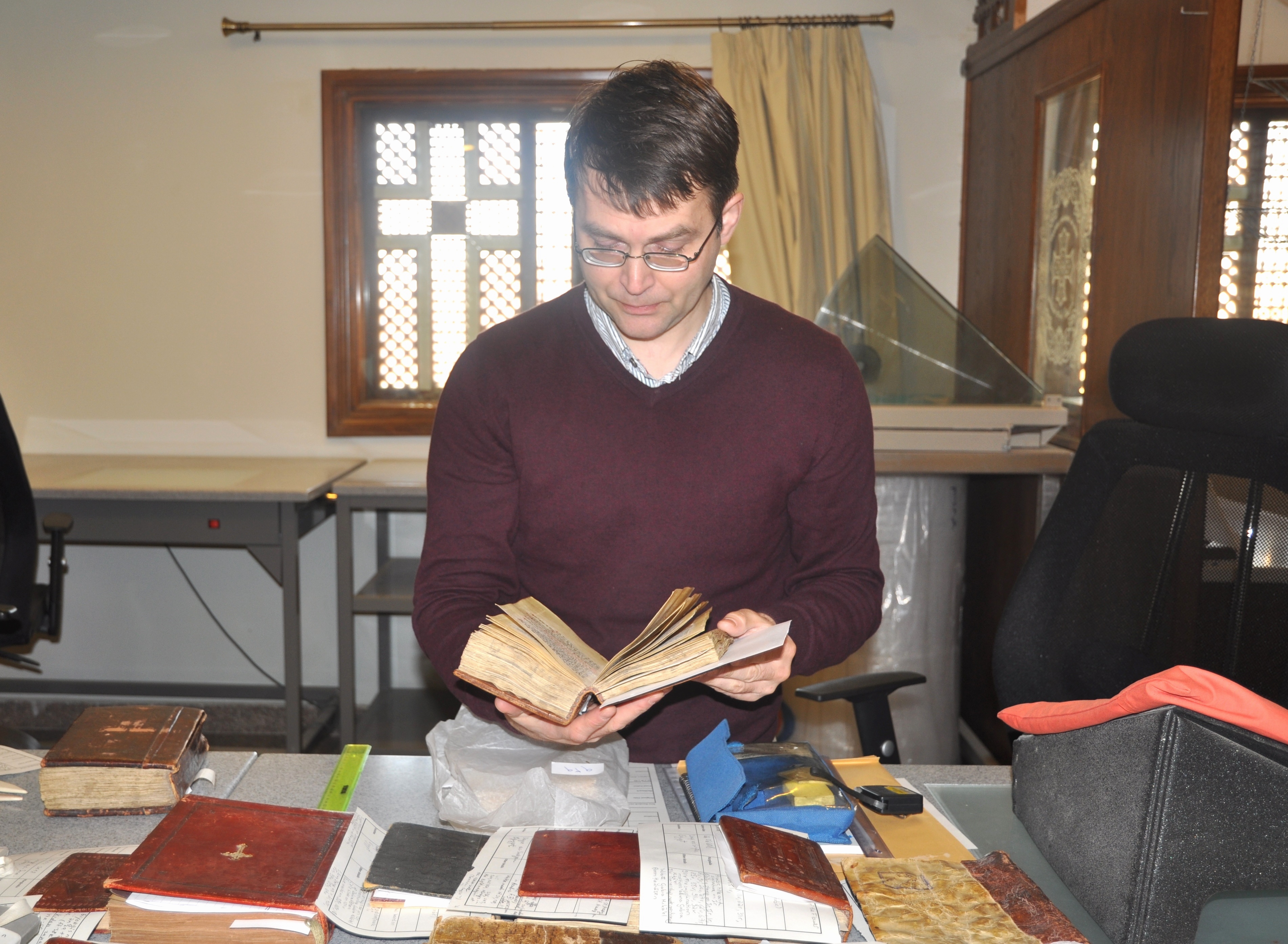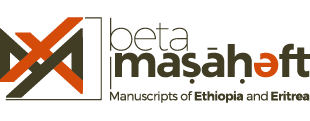The Study of the Ethiopic Manuscripts of Dayr al-Suryān
The Study of the Ethiopic Manuscripts of Dayr al-Suryān: A Report on the Visit 26 February‒3 March 2018
(Denis Nosnitsin and Dorothea Reule)
(Download the PDF version here)
Dr Denis Nosnitsin and Dorothea Reule, MA, researchers of the Project ‘Beta maṣāḥǝft: manuscripts of Ethiopia and Eritrea’, worked in the Egyptian monastery of Dayr al-Suryān in the period 26 February–3 March making a preliminary evaluation of its Ethiopic collection. ‘Beta maṣāḥǝft’ joined the efforts of preserving the cultural heritage of Dayr al-Suryān in collaboration with the Levantine Foundation which has been sponsoring manuscript conservation campaigns at the monastery for more than fifteen years, and with Prof. Stephen J. Davis and Yale Monastic Archaeology Project engaged in the cataloguing of the Syriac, Coptic and Arabic manuscripts of the monastery.
It is well known that small groups of Ethiopian monks resided in the monasteries of Wādī al-Naṭrūn over centuries until the recent time; they used to bring some books from Ethiopia and left them behind in the communities where they stayed. The Ethiopic collection of Dayr al-Suryān represents only a tiny portion of the monastery’s manuscript holdings, but it is a piece of evidence which complements the history of Dayr al-Suryān with some remarkable data.
Within one week of work, the exact number of Ethiopic manuscripts has been established and a short register of the manuscripts has been drawn up. The condition of the manuscripts has been evaluated. Now, the Ethiopic manuscripts are ready for the full-scale cataloguing and detailed study. Parchment manuscripts are only five in number, but there are scores of paper manuscripts. The oldest Ethiopic manuscript dates to the seventeenth century (ʾArgānona wəddāse, ‘The Harp of Mary’). Other manuscripts are psalters, gospels of John, collections of prayers, liturgical texts, religious poetry, Miracles of St Mary. For the moment, it is difficult to say how the moderate overall number of Ethiopic manuscripts kept in the monastic library can be reconciled with the nineteenth-century mentions of the Ethiopian monks and their books made by European travelers. We cannot exclude that a few more Ethiopic manuscripts or their fragments will be identified among the books of the large Arabic and Coptic collections.
Interestingly, the oldest object testifying to the early (pre-seventeenth century) presence of Ethiopians at Dayr al-Suryān and their intellectual activities is not a book; it is a traditional Ethiopian bookrest made of iron rods and leather. The object was identified by the German scholar Otto Meinardus in 1960s; now it is preserved in the museum of the monastery.
While staying at Dayr al-Suryān, Ethiopian monks kept transcribing religious texts in Ethiopic (the liturgical language of the Ethiopian Orthodox Church), Amharic and Təgrəñña (the spoken languages of Ethiopia and Eritrea) and made manuscripts of paper. Additional notes scattered in the manuscripts help us to identify some of the owners. We know that in the first half of the twentieth century at least one member of the Ethiopian community probably came from the monastery of Māhbara Śəllāse (located in northwestern Ethiopia, close to the Ethiopian-Sudanese border), another monk was from the famous monastery of Dabra Bizan (in today’s Eritrea), the historical centre of the ʾEwosṭatean movement. The third one came from the city of Gondar, his name was Gabra Māryām and he owned a number of books. Possibly he is identical to Gabra Māryām Ḫayla Māryām, the abbot of Dayr al-Suryān, an Ethiopian monastery in Jerusalem, of whom we know that he resided at Dayr al-Suryān for some years in the 1950s.
The next visit of the research group from Hamburg is planned for late 2018 or early 2019. Our cordial thanks go to the monks of Dayr al-Suryān for their collaboration and hospitality, particularly to the librarian Father Amūn and the head of the monastery Bishop Mattāʾus, to Prof. Stephen J. Davis who generously shared his knowledge of the collection with us, and to Ms Elizabeth Sobczynski from the Levantine Foundation for making the work possible and for help in arranging the visit.
Fig. 1. Dorothea Reule inspects a manuscript
Fig. 2. Denis Nosnitsin inspects a manuscript
Fig. 3. Dorothea Reule and Denis Nosnitsin with Bishop Mattāʾus
Fig. 4. Dorothea Reule talks about Ethiopic manuscripts to Father Kalīmīnṭus



